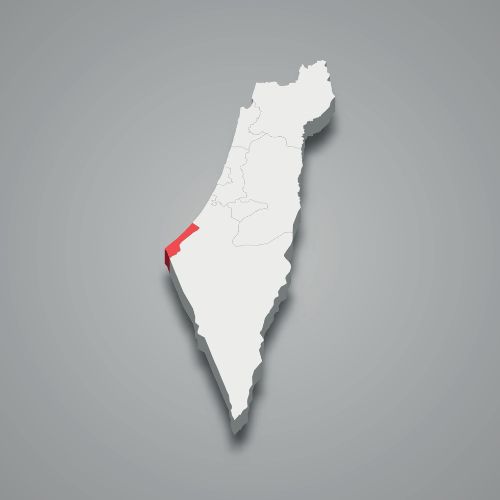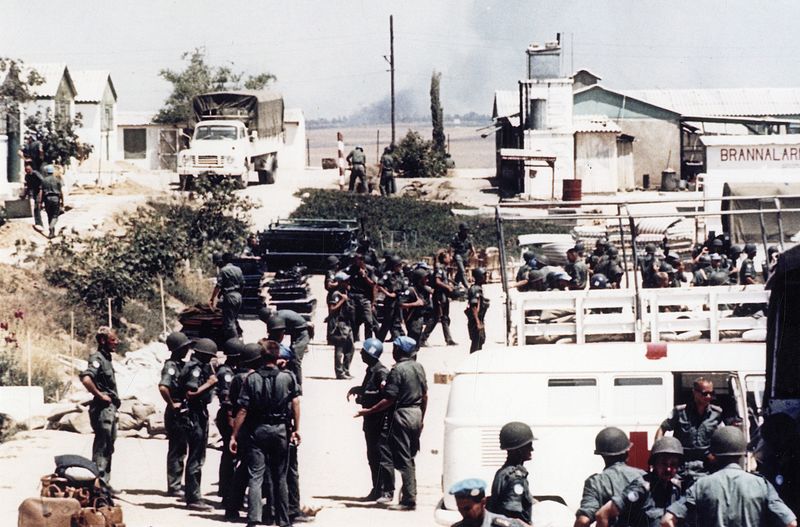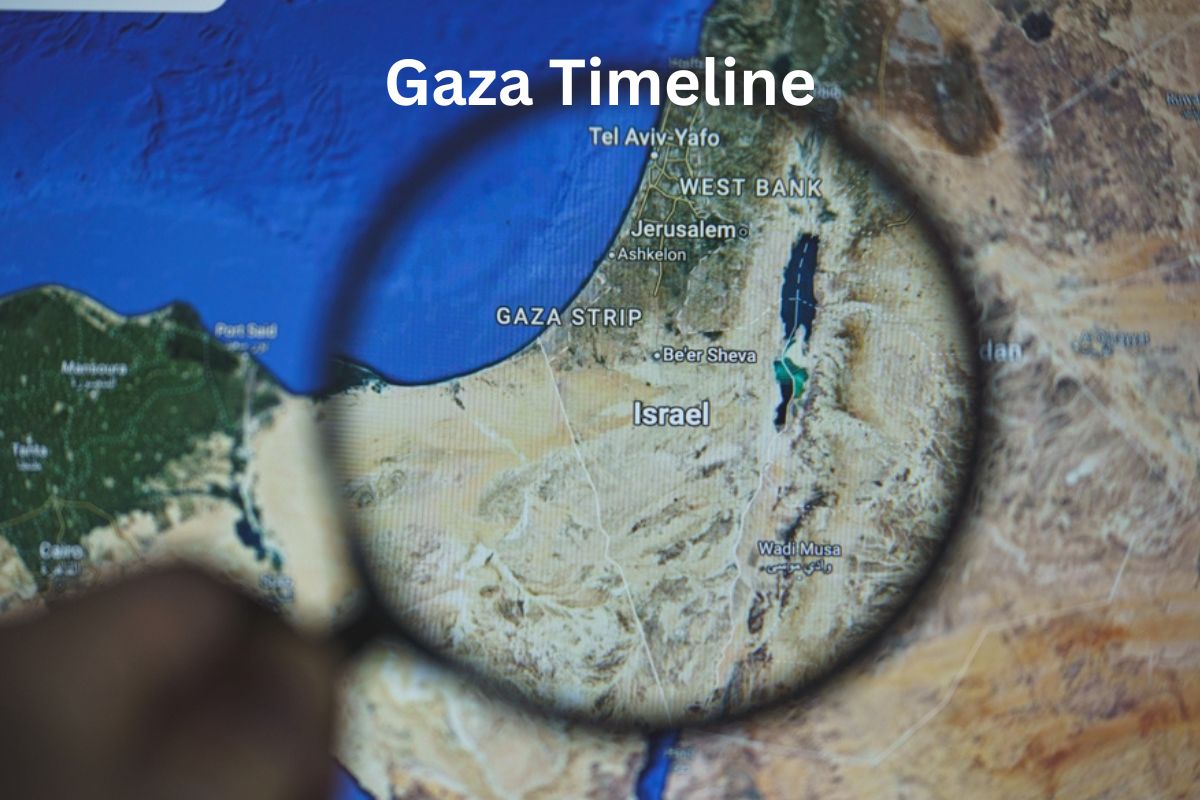The Gaza Strip, a small Palestinian territory along the eastern Mediterranean coast, has a history marked by complexity, conflict, and significant political shifts.
This brief overview will explore key events and developments in the Gaza Strip’s history, from ancient times to the present day, shedding light on its historical significance within the broader Israeli-Palestinian conflict and its enduring challenges.
| Time Period | Key Events |
|---|---|
| Ancient History | Gaza has a long history dating back thousands of years… |
| Ottoman Rule (16th to Early 20th Century) | Gaza was part of the Ottoman Empire for centuries… |
| British Mandate (1917-1948) | After World War I, Gaza came under British control… |
| 1948 Arab-Israeli War | Following the 1948 Arab-Israeli War, Gaza came under Egyptian administration… |
| Six-Day War (1967) | During the Six-Day War, Israel captured the Gaza Strip from Egypt… |
| First Intifada (1987-1993) | Palestinians in the Gaza Strip, as well as the West Bank, began an uprising… |
| Oslo Accords (1993) | The Oslo Accords were signed between Israel and the Palestine Liberation Organization… |
| Establishment of the Palestinian Authority (1994) | The Palestinian Authority (PA) was established, with Yasser Arafat as its leader… |
| Second Intifada (2000-2005) | The Second Intifada saw a resurgence in violence and conflict in the Gaza Strip… |
| Israeli Disengagement (2005) | In 2005, Israel unilaterally withdrew from the Gaza Strip… |
| Hamas Takes Control (2007) | In 2007, the Islamist political and militant group Hamas seized control… |
| Ongoing Conflict and Blockade | The Gaza Strip has been the site of frequent conflicts and hostilities… |
Timeline of the Gaza Strip
1. Ancient History:
Gaza has a rich and ancient history that can be traced back thousands of years. It was known as “Ghazzat” in ancient Egyptian texts and “Minoa” in ancient Greek sources.
The city of Gaza was strategically located on the crossroads of major trade routes, making it a hub for commerce and cultural exchange.
Also Read: Facts About Palestine
Throughout antiquity, Gaza was ruled by various civilizations, including the Ancient Egyptians, Philistines, Assyrians, and Persians. These different rulers left their cultural and architectural influences on the region.
2. Ottoman Rule (16th to Early 20th Century):
Gaza came under Ottoman rule in the early 16th century when the Ottoman Empire expanded its territories into the Levant region.
During the Ottoman period, Gaza maintained its importance as a trading and administrative center. It was known for its bustling markets, thriving agricultural production, and significant population.
Also Read: The Gaza Strip Facts
The Ottomans left a lasting architectural imprint on Gaza, with structures such as mosques and caravanserais still standing as historical landmarks today.

3. British Mandate (1917-1948):
During World War I, the British forces, led by General Edmund Allenby, captured Gaza from the Ottomans in 1917 as part of their campaign in the Middle East.
After the war, Gaza, along with the rest of Palestine, came under British mandate in accordance with the League of Nations’ decisions.
The British Mandate period was marked by growing tensions between Jewish immigrants and the Arab population in Palestine, setting the stage for the later conflict between Jews and Arabs over the territory.
4. 1948 Arab-Israeli War:
The 1948 Arab-Israeli War, also known as the War of Independence from the Israeli perspective, had a profound impact on the Gaza Strip. It was a key moment in the ongoing Israeli-Palestinian conflict.
After the declaration of the State of Israel on May 14, 1948, neighboring Arab states, including Egypt, Jordan, and Syria, intervened in the conflict. Gaza came under Egyptian administration as a result of this war.
The war resulted in a significant Palestinian refugee crisis, with hundreds of thousands of Palestinians fleeing or being expelled from their homes, including those in Gaza.
5. Six-Day War (1967):
The Six-Day War in 1967 had a seismic impact on the Gaza Strip and the broader Middle East. Israel, in a pre-emptive strike, swiftly defeated several Arab countries, including Egypt.
During the course of this war, Israel captured the Gaza Strip from Egyptian control, marking the beginning of Israel’s occupation of the territory. The Israeli military also occupied other territories, including the West Bank, East Jerusalem, and the Golan Heights.
The occupation of Gaza led to significant changes in its political and demographic landscape, with Israel exercising control over the population and resources of the territory.

6. First Intifada (1987-1993):
The First Intifada, which means “shaking off” in Arabic, was a widespread Palestinian uprising against Israeli occupation. It began in Gaza and the West Bank in December 1987.
Palestinians in the Gaza Strip and the West Bank engaged in acts of civil disobedience, protests, strikes, and other forms of resistance against Israeli rule. The intifada was marked by both non-violent and violent actions.
The First Intifada played a crucial role in shaping the Palestinian national consciousness and ultimately led to negotiations between the Palestine Liberation Organization (PLO) and Israel, culminating in the signing of the Oslo Accords in 1993.
7. Oslo Accords (1993):
The Oslo Accords were a series of agreements signed between Israel and the Palestine Liberation Organization (PLO) in the early 1990s, with the initial signing taking place in Washington, D.C., in 1993.
The Oslo Accords aimed to establish a framework for resolving the Israeli-Palestinian conflict and creating a path toward Palestinian self-governance.
Under the Oslo Accords, the Gaza Strip was one of the areas where limited Palestinian self-rule was implemented. The territory was divided into multiple administrative areas, with the Palestinian Authority (PA) gaining control over parts of Gaza.
8. Establishment of the Palestinian Authority (1994):
In 1994, following the signing of the Oslo Accords, the Palestinian Authority (PA) was officially established. Yasser Arafat became its leader.
The establishment of the PA marked a significant development for the Gaza Strip, as well as the West Bank. It introduced a degree of self-governance for Palestinians in these territories, including the administration of civil affairs, education, and security in areas under its control.
9. Second Intifada (2000-2005):
The Second Intifada, also known as the Al-Aqsa Intifada, was a period of intensified Palestinian-Israeli violence that began in late 2000.
The Gaza Strip, along with the West Bank, experienced widespread protests, suicide bombings, and military operations during this period. The Second Intifada was marked by a significant increase in violence compared to the First Intifada.
The Second Intifada further strained relations between Israelis and Palestinians and had a lasting impact on the security situation in the Gaza Strip.

10. Israeli Disengagement (2005):
In 2005, then-Israeli Prime Minister Ariel Sharon implemented a unilateral disengagement plan, also known as the Gaza Disengagement Plan.
Under this plan, Israel withdrew all of its settlements from the Gaza Strip and also evacuated its military presence, effectively ending its direct governance of the territory.
The withdrawal was met with mixed reactions, with some seeing it as a step toward peace and others as a way for Israel to maintain control over Gaza from a distance. The evacuation of settlements and military personnel led to significant changes in the Gaza Strip’s political landscape.
11. Hamas Takes Control (2007):
In 2007, Hamas, an Islamist political and militant group, took control of the Gaza Strip in a violent conflict with the Fatah-dominated Palestinian Authority (PA).
This event marked a significant turning point in the governance of the Gaza Strip. Hamas, which had won Palestinian legislative elections in 2006, effectively ousted the PA and established its own administration.
The takeover led to a political and territorial split, with Hamas controlling Gaza and the PA, led by Fatah, retaining control over parts of the West Bank. This division remains a key aspect of Palestinian politics and the Israeli-Palestinian conflict.
12. Ongoing Conflict and Blockade:
Since Hamas took control of the Gaza Strip in 2007, the territory has experienced multiple conflicts and confrontations with Israel.
Notable conflicts include Operation Cast Lead in 2008-2009, Operation Pillar of Defense in 2012, and Operation Protective Edge in 2014. These military operations resulted in significant casualties and destruction in Gaza.
Israel imposed a blockade on Gaza in 2007, restricting the movement of goods and people in and out of the territory. This blockade has had a profound impact on the economy and humanitarian conditions in Gaza, leading to international criticism.
13. Recent Developments (Post-2014):
Since the 2014 conflict, there have been sporadic escalations of violence between Hamas and Israel, including rocket attacks from Gaza and Israeli military responses.
Egypt has played a role in brokering ceasefires and attempting to reconcile Palestinian factions, although efforts to achieve a lasting intra-Palestinian reconciliation have faced challenges.
The humanitarian situation in Gaza has remained a concern, with issues such as high unemployment, limited access to basic services, and a strained healthcare system.
14. COVID-19 Pandemic:
The COVID-19 pandemic, which began in late 2019, also affected the Gaza Strip. The densely populated territory faced challenges in responding to the pandemic due to limited healthcare resources and the ongoing blockade.
International organizations and aid agencies have worked to provide medical assistance and supplies to help combat the spread of the virus in Gaza.
15. Evolving Situation (2023 and Beyond):
On October 7, 2023, a coordinated surprise offensive against Israel was launched by Palestinian militant factions directed by Hamas. The morning offensive began with a bombardment of at least 5,000 rockets fired into Israel from the Hamas-controlled Gaza Strip.
Approximately 2,500 Palestinian terrorists crossed the Gaza-Israel border and attacked civilian and IDF military targets in the Gaza Strip. during least 1,400 Israelis were killed, the vast majority of them were civilians, including 260 during a Re’im music festival.
The situation in the Gaza Strip continues to evolve. Efforts to address the political and humanitarian challenges faced by Gaza’s residents are ongoing, but a comprehensive resolution to the Israeli-Palestinian conflict remains elusive.
Political developments, regional dynamics, and international efforts all play a role in shaping the future of the Gaza Strip.
